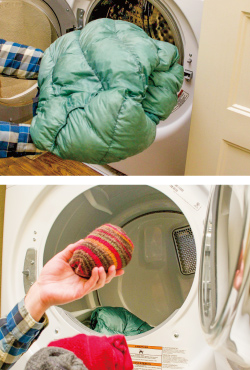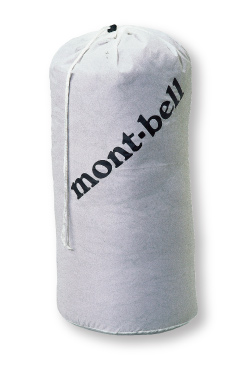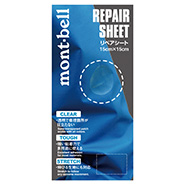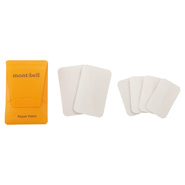Down Maintenance

Buying a Montbell down garment is an investment in warmth, and proper maintenance of that product insures optimal return. Although cleaning down pieces may seem daunting, it is actually very simple. You can do it at home in a washing machine (or by hand in the tub) using a down specific soap. Neglect allows dirt, sweat and body oils to penetrate the face fabric and stick to the down. Repeated seasons of this treatment will lead to down clumping and impaired performance. Take this real world example of down that has seen several seasons of use without ever having been washed.

We opened up a jacket that was used for several seasons and took three 1.5 gram samples of down. The left cylinder contains a sample of the unwashed down, right out of the jacket. Notice the clumping and how matted the down looks? The middle cylinder contains a sample of down that was put through a dryer, no washing. Loft improved marginally but you can still see clumping. The cylinder on the right contains a sample of down from the jacket that was washed and then dried. See what a difference washing and drying the down made? It is hard to believe that these three cylinders contain the same amount of down. However, washing and drying removes contaminates from the down and restores its ability to loft. Compromised down clusters like the ones in the left cylinder struggle to trap air, thus reducing their ability to insulate.
In this particular example, washing and drying the down was able to save the day, restoring the down's ability to loft. But this is not always the case. Down can reach a point of no return where no amount of washing will restore the down's ability to loft. We see examples of down garments every season from passionate outdoor users who have skipped cleaning their down routinely, and become utterly disappointed to realize that their neglect has ruined their favorite down piece. Practicing proper care is essential to ensuring your favorite down piece provides you with warmth long into the future.
What to do about feathers poking through


By its very nature, the shell fabric of ultra-light products is porous. This is what allows the fabric a measure of breathability and as a result, it is possible for the small spines of feathers and down clusters to work their way through the face material. It is important to realize that the fabric is NOT torn, but that the spines are passing in between the threads. (Fig.A)
The best maintenance in this situation is to reach behind the fabric and pull the offending down cluster BACK INTO its down chamber.(Fig.B) The small space between the threads will close and “heal” the breach. You may also gently massage the area to promote this "self sealing". Do not attempt to pull the cluster OUT! Two things will happen if you do, 1) that cluster will be tangled with another cluster and it too will follow thru the fabric in an endless fountain of down, and 2) the space between the threads will become larger and take longer to reseal.
Theoretically, our extremely light fabrics (7-15 denier) might tend to leak more particles than our other shell fabrics (20, 40, 70 denier) because of the lightweight nature of its construction. Rest assured that the fabrics we use are downproof and have the tightest weaves and the highest available thread counts possible. You can be confident that performance is in no way compromised.

Storage

You can extend the life of your garment by hanging it loose, in a cool, dry, well ventilated place. For your convenience most down products come with a small stuff sack for use in the backcountry. To avoid damaging the insulation DO NOT store your delicate goose down clothing in this manner for long periods of time.
Pretreating Stubborn Areas


For especially dirty sections of fabric, or for stand-alone dirty spots like coffee spills, washing those areas first, and then the garment as a whole is most effective. For stubborn stains, apply down cleaner diluted with water with a sponge or towel, gently brushing the dirty area.
Hand Wash


When you hand wash, fill the tub with warm water, add down soap and put the garment in the tub. The challenge will be to submerge the item underwater. Carefully force air out of the garment and gently work the soapy water through it. It may be necessary to change the soapy water more than once to fully remove dirt and body oils. Once you are satisfied that the item is clean be prepared to rinse it with warm clear water several times. It is VERY important that all of the soap is removed from the down before it is dried. When in doubt…rinse again! Four or more rinses are not uncommon. Do not wring water from your delicate down garment, instead drain the tub and then roll the item tightly and carefully to remove all of the water.
Machine Wash


When washing down apparel, be sure to turn the garment inside out, and zip up all of the zippers. When machine washing, utilize the coldest and most gentle settings. Remember to always use a front-loading large capacity commercial washer, as the center agitator in a top-loading machine will damage light weight nylon, stress seams, and degrade goose down. It is important to wash your garment with a down specific soap. Never use liquid detergents or fabric softeners, as detergents may leave residues that will not rinse out and may wash away the natural oils of the down. Montbell recommends cleaning products made by Nikwax, Grangers, and ReVivex. It is VERY important that all of the soap is removed from the down before it is dried. To insure this we highly recommend a second cold water rinse cycle. When in doubt… rinse again!
Drying


When preparing to dry your ultra-light down clothing, be very careful when moving from the washer to the dryer. Lift items all at once from the bottom and carefully place them in a large capacity commercial dryer. Tumble dry on low to medium heat (all machines differ). Drying may take an hour or two. We recommend checking garments often to eliminate the possibility of overheating (melted nylon) and that the down is not clumping (less then optimal lofting). Some folks may prefer to add a handful of balled up socks the load to promote more even drying. If there is clumping, redistribute the down with gentle massage and continue to run the dry cycle. At this point in the process, clumping down is damp down or down that still has residual cleaning agent on its fibers. It is also important not to line dry or expose your ultra-light clothing to direct sunlight for extended periods of time, as the UV rays may damage the nylon.

Storage


You can extend the life of your sleeping bag by storing it loose, in a cool, dry, and well ventilated place. All down bags come with a large cotton bag for storage purposes.
Hand Wash

When you hand wash, fill the tub with warm water, add down soap and put the bag in the tub. The challenge will be to submerge the whole sleeping bag underwater. Carefully force air out of the bag and gently work the soapy water through it. Some find that leaving the sleeping bag in its stuff sack when introducing it to the water speeds up the process. This method guarantees that the air has been forced out, saving you from having to fight the air filled baffles floating to the surface. Carefully pull the bag from its stuff sack and gently knead the soapy water through the bag. It may be necessary to change the soapy water more than once to fully remove dirt and body oils. Once you are satisfied that your bag is clean be prepared to rinse it with warm clear water several times. It is VERY important that all of the soap is removed from the down before it is dried. When in doubt…rinse again! Four or more rinses are not uncommon. Do not wring water from your sleeping bag, instead drain the tub and then roll the bag up tightly and carefully to remove all of the water. Use both hands and extreme caution when picking up the sleeping bag, as it may be heavy from any water still trapped inside the baffle chambers.
Machine Wash

When washing your sleeping bag, be sure to turn the bag inside out, and zip up all of the zippers. If machine washing, wash on cold and gentle settings. Remember to always use a front-loading large capacity commercial washer, as the center agitator in a top-loading machine will damage light weight nylon, stress seams, and degrade goose down. It is important to wash your sleeping bag with a down specific soap. Never use liquid detergents or fabric softeners, as detergents may leave residues that will not rinse out and may wash away the natural oils of the down. Montbell recommends cleaning products made by Nikwax, Grangers, and ReVivex. It is VERY important that all of the soap is removed from the down before it is dried! To insure this we highly recommend a second cold water rinse cycle. When in doubt…rinse again! With larger sleeping bags four or more rinses are not uncommon.
Drying


When preparing to dry your sleeping bag, be very careful when moving it from the washer to the dryer. Lift the entire bag at once from the bottom and carefully place it in a large capacity commercial dryer. Montbell does not recommend using a home dryer as the small volume can lead to too much contact with the hot metal drum and potentially melt the nylon. Tumble dry on low to medium heat (all machines vary). Drying may take several hours, Montbell recommends checking the bag often to make sure it is not overheating and that the down is not clumping. If the down is clumping, redistribute the down with gentle massage and continue to run the dry cycle. At this point in the process, clumping down is damp down or down that still has residual cleaning agent on its fibers. It is also important not to line dry or expose your sleeping bag to direct sunlight for extended periods of time, as the UV rays may damage the nylon.
About laundry detergent for down products

Down specific cleaners made by Nikwax, Grangers, and ReVivex are recommended and will wash your gear safely yet effectively. They will help maintain down's natural heat-retaining properties by removing substances that can negatively impact down's ability to loft.
Before washing, make sure there are no tears or scratches in your garment. Tears and holes need to be repaired before any cleaning can take place. Permanent repairs are best but temporary repairs can be made with a repair patch.
-

Repair Sheet
Price: €13.00 -

Repair Patch
Price: €17.00
